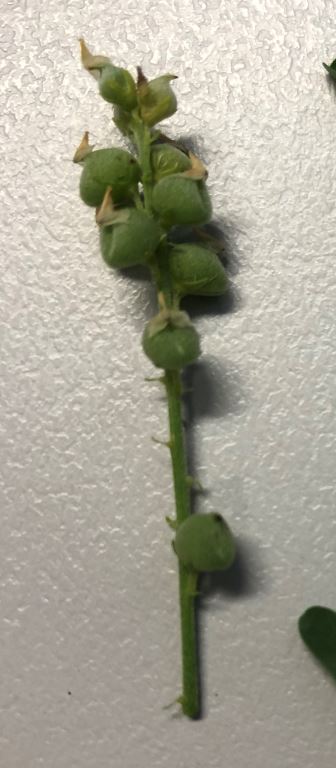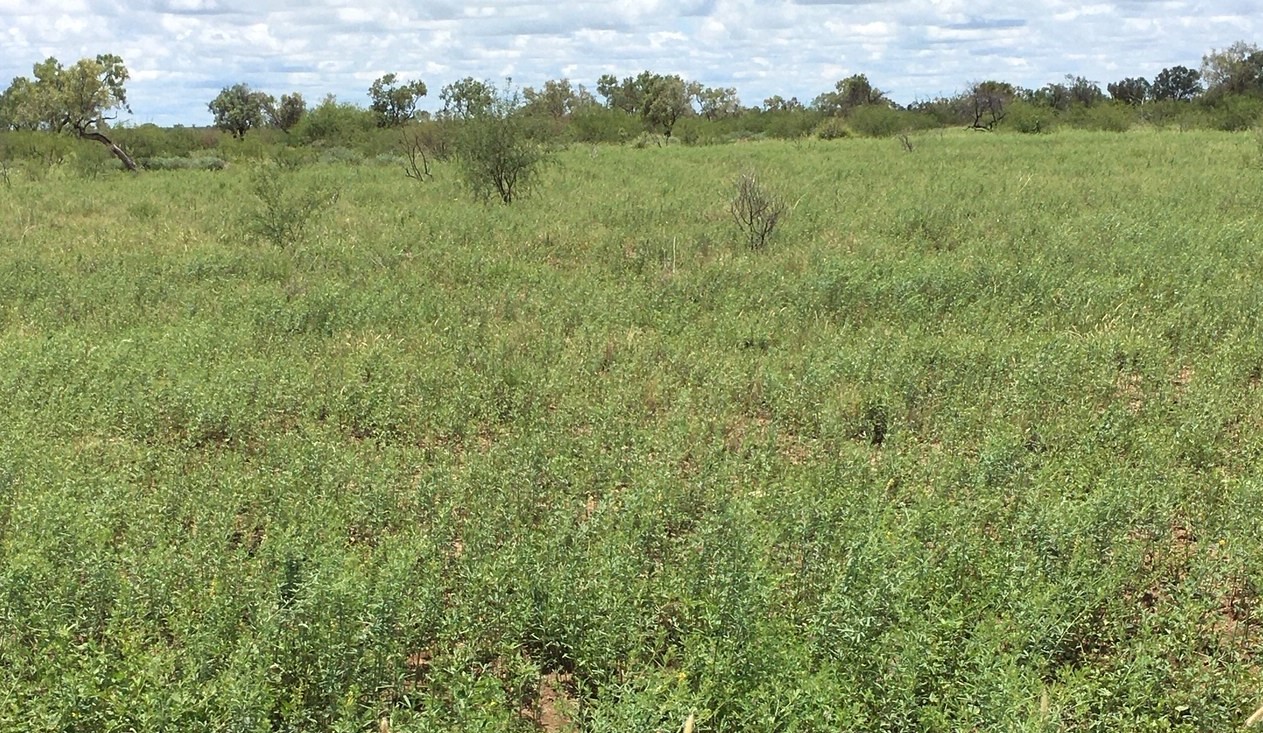Trefoil rattlepod across north-west Queensland this season
Trefoil rattlepod (Crotalaria medicaginea) is growing profusely across a number of areas of north-west Queensland, predominantly on Mitchell grass downs country where the health of perennial grasses has been reduced through drought or flood damage.

Trefoil rattlepod (Crotalaria medicaginea) is usually found growing in Mitchell grass pastures of the north-west, producing seeds each season. Then, when conditions are favourable, as they have been this year, the plant is able to germinate more quickly than others and ‘beat them out of the blocks’ to become dominant in some areas.
The variety of trefoil rattlepod you have (see differences below) will determine whether or not there is risk of toxicity to horses.
There are two main varieties and a newly recognised variety of this plant likely to be growing in the north-west this season.

Crotalaria medicaginea var. medicaqinea is shorter (grows about 30 cm tall) and its small pods are 3–4 mm long. This variety is not known to be toxic.
Crotalaria medicaginea var. neglecta can grow to one metre tall and the pods are 4–5.5 mm in length. This variety is not recorded as causing poisoning of cattle or sheep, however, can be toxic to horses. It contains an unidentified toxin that causes ulceration of the oesophagus, a condition that can then prevent swallowing of water or food.
A newly recognised form of this species was found to be responsible for causing Kimberley Walkabout Disease poisoning of horses in the Longreach area in 2010. These plants were found to contain a new pyrrolizidine alkaloid (cromedine). At this stage, this variety can only be conclusively identified by its distinct chemical profile.
Walkabout Disease is also caused by some other Crotalaria species where the pyrrolizidine alkaloid toxin accumulates over time, slowly causing liver damage until it becomes evident as an illness in ruminants, pigs, poultry and horses.
A related and very similar plant usually found further to the north and north-east, Chillagoe horse poison (Crotalaria aridicola), can also cause oesophageal ulceration in horses. However, this plant is a more silvery-grey colour and has slightly longer pods that grow 5–7 mm.
Unfortunately, these plants and other herbages are quicker to return than perennial grasses after drought, and other extreme events (such as the 2019 floods), and pasture recovery is often slower than we would like.
Should you wish to learn more about toxic plants in Australia, the e-book Australia’s Poisonous Plants, Fungi and Cyanobacteria by Ross McKenzie, is well worth having. It can be purchased at Australia’s Poisonous Plants, Fungi and Cyanobacteria, Ross McKenzie, 9781486313877 (csiro.au).
As always, if you are keen to identify a certain plant on your property, photograph it and contact your local extension officer. Sometimes identification features require microscopic examination so a sample is necessary.
Hints on how to collect and press specimens and where to send them for identification are available at: Botanical Specimens for Identification.
